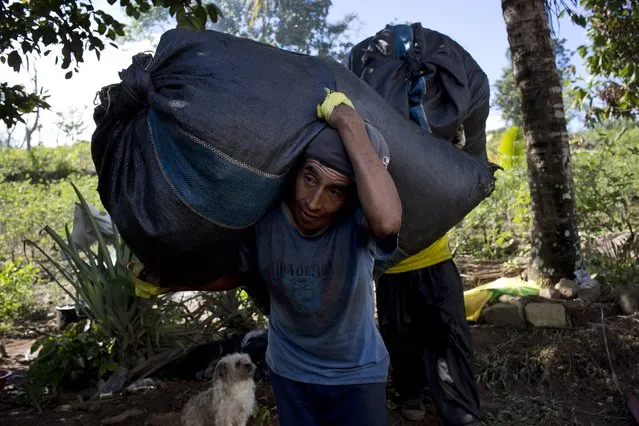
In this June 20, 2015 photo, Edgar Escalante shoulders a sack filled with coca leaves to the weight station in Samugari, Peru. Pickers earn about 33 cents per kilo (2.2 pounds) of coca leaf, adding up to about $16 a day for the average yield. (Photo by Rodrigo Abd/AP Photo)
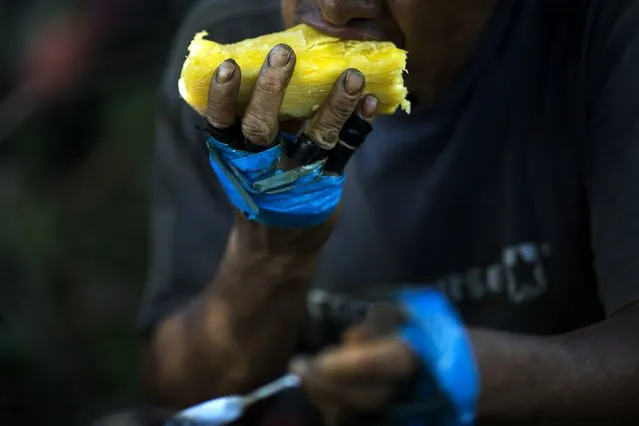
In this June 20, 2015 photo, Roberto Viga, 50, takes a bite from a chunk of cooked yucca, during his break from harvesting coca leaves in Samugari, Peru. Nearly all the coca picked ends up being processed into cocaine, and many worry that the government will finally begin destroying the crop, as it has elsewhere. (Photo by Rodrigo Abd/AP Photo)
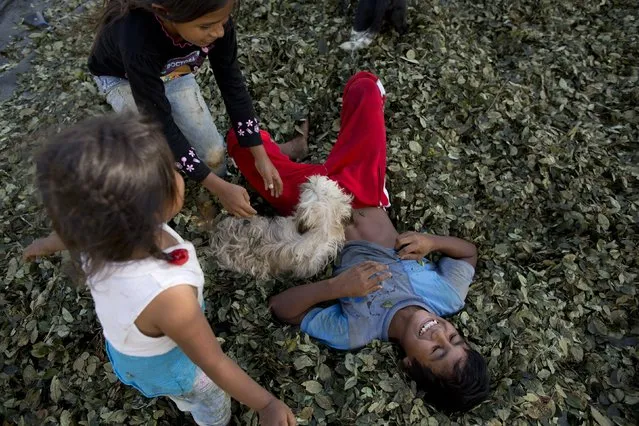
In this June 20, 2015 photo, kids play on a pile of coca leaves while helping their parents in the harvest of coca leaves in Samugari, Peru. Official figures show more than two-thirds of its inhabitants live in poverty while chronic malnutrition plagues about half of children under age 5. (Photo by Rodrigo Abd/AP Photo)
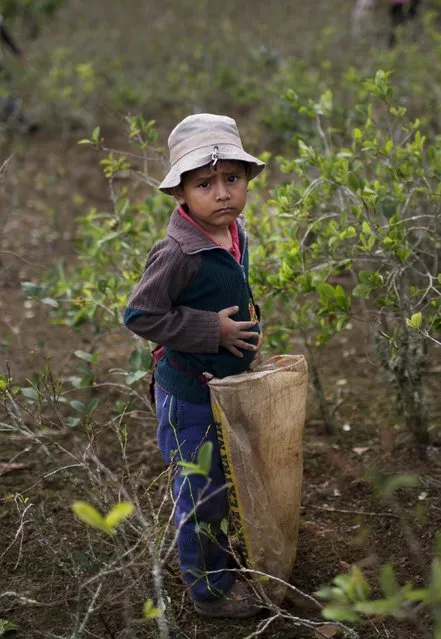
In this June 20, 2015 photo, Franco, 5, stands in coca field, helping his parents during the harvest of coca leaves in Samugari, Peru. Some 17,000 children of coca pickers have not been to classes in a month because teachers are on strike to demand that their $300 monthly salary be increased by $581. (Photo by Rodrigo Abd/AP Photo)
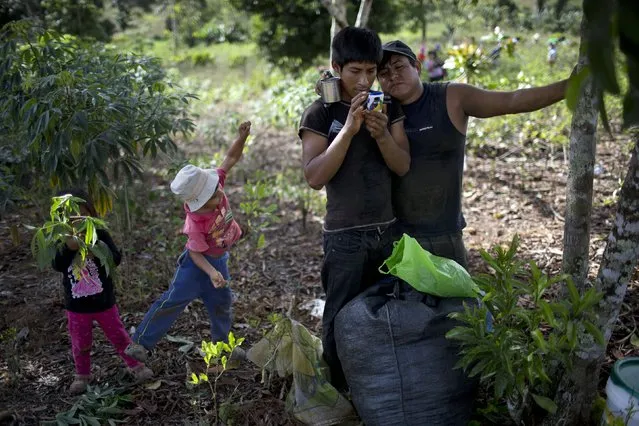
In this June 20, 2015 photo, two laborers watch a video on their break from harvesting coca leaves in Samugari, Peru. The government of President Ollanta Humala had planned to begin coca eradication last year in the area, which is a military-controlled zone, but put the plan on hold after some in the armed forces cautioned that doing so could strengthen the Shining Path remnants. (Photo by Rodrigo Abd/AP Photo)
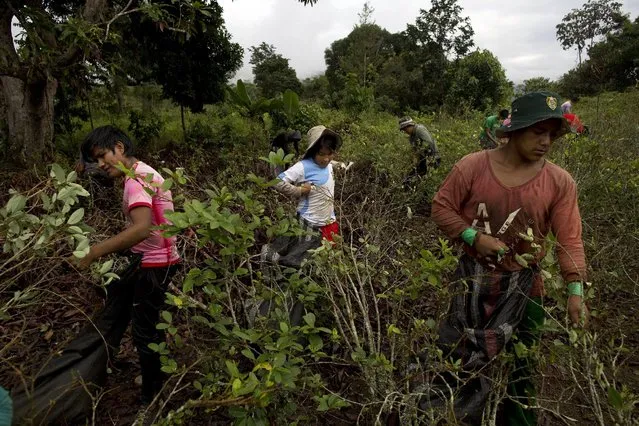
In this June 20, 2015 photo, youth pick coca leaves in Samugari, Peru. Most of the residents of the area depend on coca production for a living. (Photo by Rodrigo Abd/AP Photo)

In this June 20, 2015 photo, Niberta Galvez uses the bottom half of his shirt to collect coca leaves in Samugari, Peru. Coca farmers were among the locals who, in 1984, formed citizen militias to help the military beat back Shining Path rebels, reducing them to a small group of fewer than 500 who now are deeply involved in drug trafficking. (Photo by Rodrigo Abd/AP Photo)
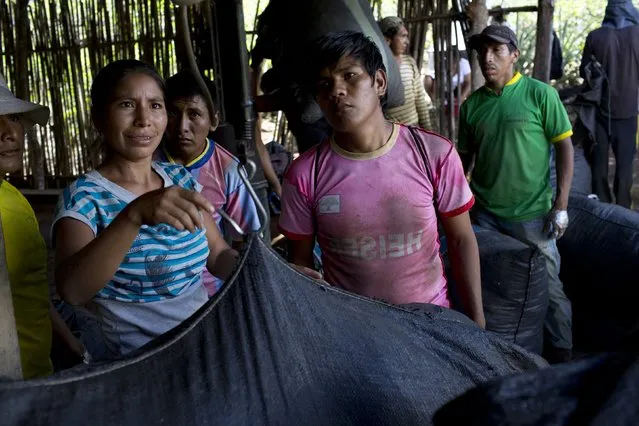
In this June 20, 2015 photo, laborers weigh a sack of freshly harvested coca leaves in Samugari, Peru. Most of the residents of the area depend on coca production. It is the reason, in fact, that many have settled in this remote region. (Photo by Rodrigo Abd/AP Photo)
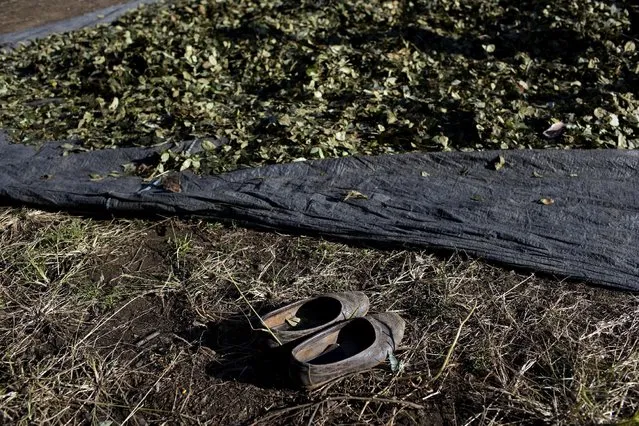
This June 20, 2015 photo shows a pair of shoes parked at the edge of a tarp, placed there by a woman whose job it is to spread the coca leaves with her feet as part of the drying process, in Samugari, Peru. According to United Nations figures, some 99,000 metric tons of coca leaves were picked in the area in 2013 compared to 22,000 tons in other parts of Peru. (Photo by Rodrigo Abd/AP Photo)
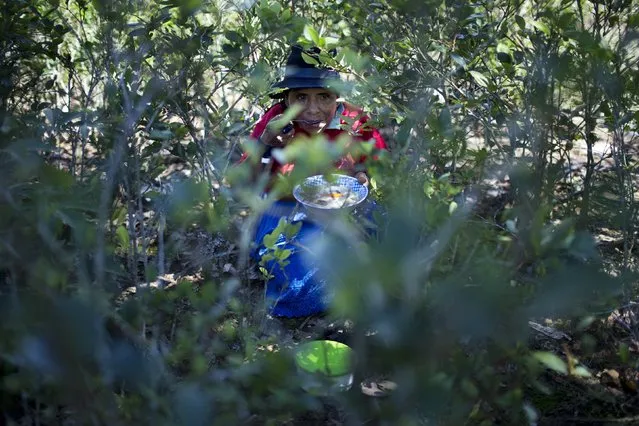
In this June 20, 2015 photo, Andrea Mucha, 64, eats lunch during her break from harvesting coca leaves in Samugari, Peru. Andrea along with other women, men, teens and children work in the world's No. 1 coca-producing valley. (Photo by Rodrigo Abd/AP Photo)
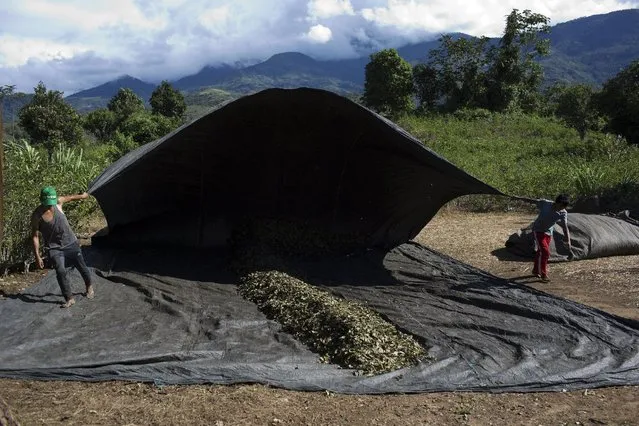
In this June 20, 2015 photo, youth raise a tarp over coca leaves as part of the drying process leaves in Samugari, Peru. Farm owners sell a kilo of leaves for $3.50 to wholesalers who supply drug traffickers. That's more than twice what farmers would earn for coffee or cacao. (Photo by Rodrigo Abd/AP Photo)
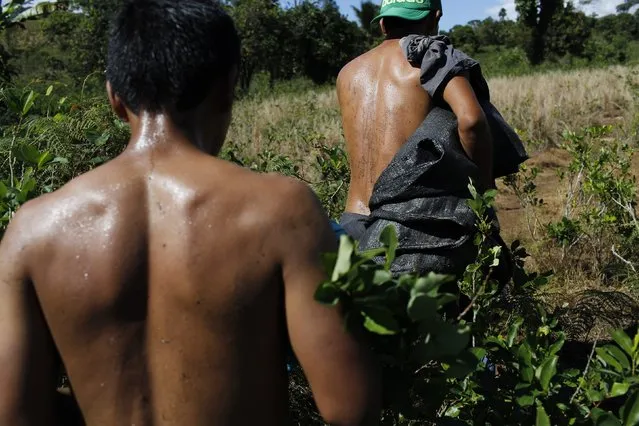
In this June 20, 2015 photo, laborers walk through a field with bags used for carrying harvested coca leaves, in Samugari, Peru. Nearly all the coca they pick ends up being processed into cocaine, and many worry that the government will finally begin destroying the crop, as it has elsewhere. (Photo by Rodrigo Abd/AP Photo)
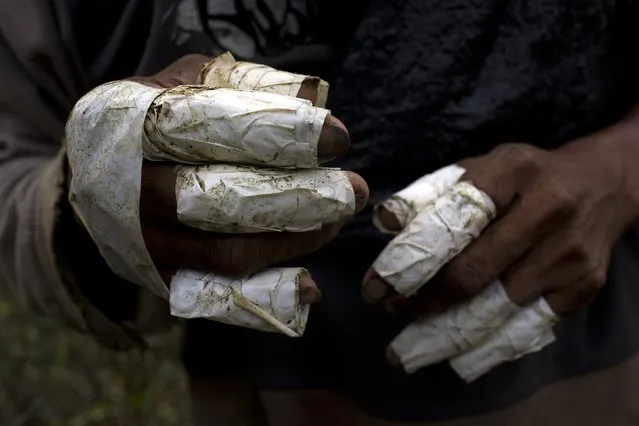
This June 20, 2015 photo shows the fingers of laborer Walter Perez wrapped in tape as a form of protection when removing coca leaves from their stems. Pickers earn about 33 cents per kilo (2.2 pounds) of coca leaf, adding up to about $16 a day for the average yield. (Photo by Rodrigo Abd/AP Photo)
01 Jul 2015 13:11:00,
post received
0 comments
